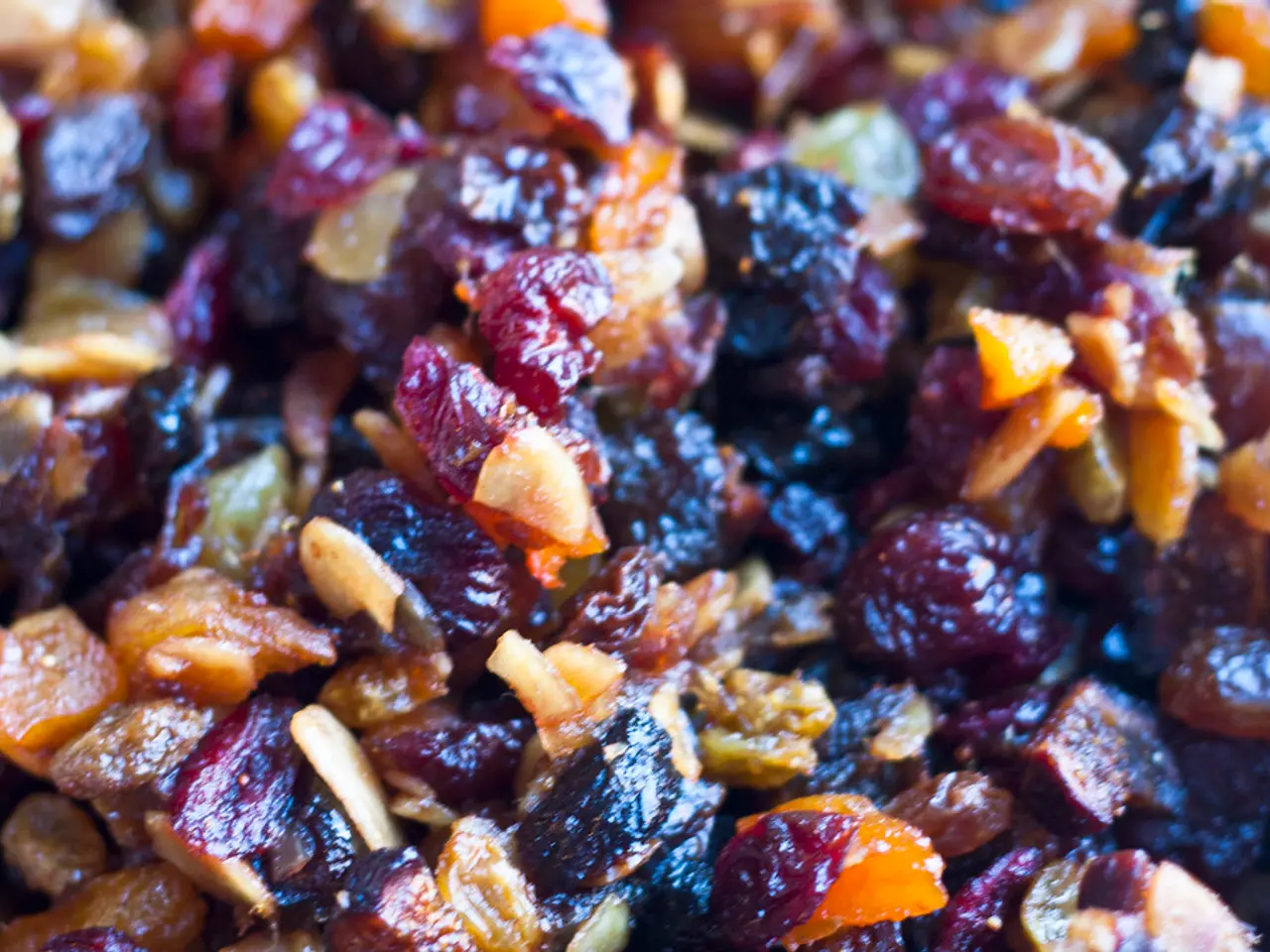Exploring the Creation of Nutritious Food Items: A Preliminary Overview
In the pursuit of healthier food options, Consumer New Zealand has taken a unique approach. Through the Bad Taste Food Awards, they call out manufacturers who mislead about their products' health benefits [1]. Most people agree that foods are neither good nor bad, but the amount eaten and the activity before or after eating determines their impact [2].
The development of high-value, healthy food products requires a team effort, including food technologists, nutritionists, sensory scientists, and manufacturing engineers [3]. The High-Value Nutrition National Science Challenge, a collaborative and multi-disciplinary research programme launched between 2014 and 2016, aimed to create knowledge to deliver a competitive advantage to New Zealand's food and beverage exports [10].
Consumers prioritize high protein, fiber, essential nutrients, and functional ingredients that promote health benefits such as heart health, stress reduction, or gut health [4]. Incorporation of nutrient-dense ingredients like nuts, seeds, whole grains, vitamins, minerals, and bioactive compounds is essential to meet modern expectations for health and wellness [1][2].
Taste, texture, aroma, and overall mouthfeel remain critical to consumer acceptance even for health-focused products. For example, Glico’s products balance great taste with health benefits [4]. Minimizing off-flavors, unwanted textures, or artificial aftertastes is important, especially when using natural or functional ingredients that can impart undesirable sensory notes [2][4].
Scaling up product formulations from lab or pilot scale requires maintaining ingredient functionality, consistency in sensory quality, and nutritional profiles [4]. Challenges include ingredient sourcing, stability, processing conditions, and equipment capabilities that may affect product quality or nutrient retention during large-scale production [2].
The mission of the National Science Challenge High-Value Nutrition Ko Ngā Kai Whai Painga was to grow the science excellence and knowledge needed to produce and deliver healthy food and nutrition to the world [10]. In 2022, the Health Star Rating system was upgraded to be tougher on sugar and salt [9]. If manufacturers do not meet a 70% target for Health Star Rating system uptake by 2025, the government may consider making the system mandatory [5].
Plant & Food Research, with the largest sensory and consumer science research group in the southern hemisphere, plays a significant role in this journey [7]. They develop new, healthier food products [8] and investigate naturally occurring phytochemicals and carbohydrates in grains, vegetables, and fruits as a means of producing high-value foods that match energy requirements and promote appetite control [6].
The structure, density, shape, and surface area of a food product affect its glycaemic load [6]. Human clinical trials can be part of the process for developing healthy food products [3]. The New Zealand economy earns over $20 billion per year from high-value nutrition food exports [5].
The National Science Challenges ended in June 2024, with the University of Auckland hosting the High-Value Nutrition National Science Challenge website [10]. The Australian and New Zealand governments are conducting a review of the Health Star Rating system for food [9].
In conclusion, a “composition-first” development approach focusing on boosting nutritional density while delivering a familiar and enjoyable sensory experience, combined with an efficient scale-up strategy, is essential for success in the health-focused food product market [1][3][4]. Sustainable, natural ingredients aligned with consumer wellness trends also contribute to product value and marketability [2].
The collaboration between food technologists, nutritionists, sensory scientists, and manufacturing engineers is crucial for the development of high-value, healthy food products [3]. Incorporating nutrient-dense ingredients and meeting modern expectations for health and wellness, such as high protein, fiber, essential nutrients, and functional ingredients, is essential for consumer approval [1][2].







